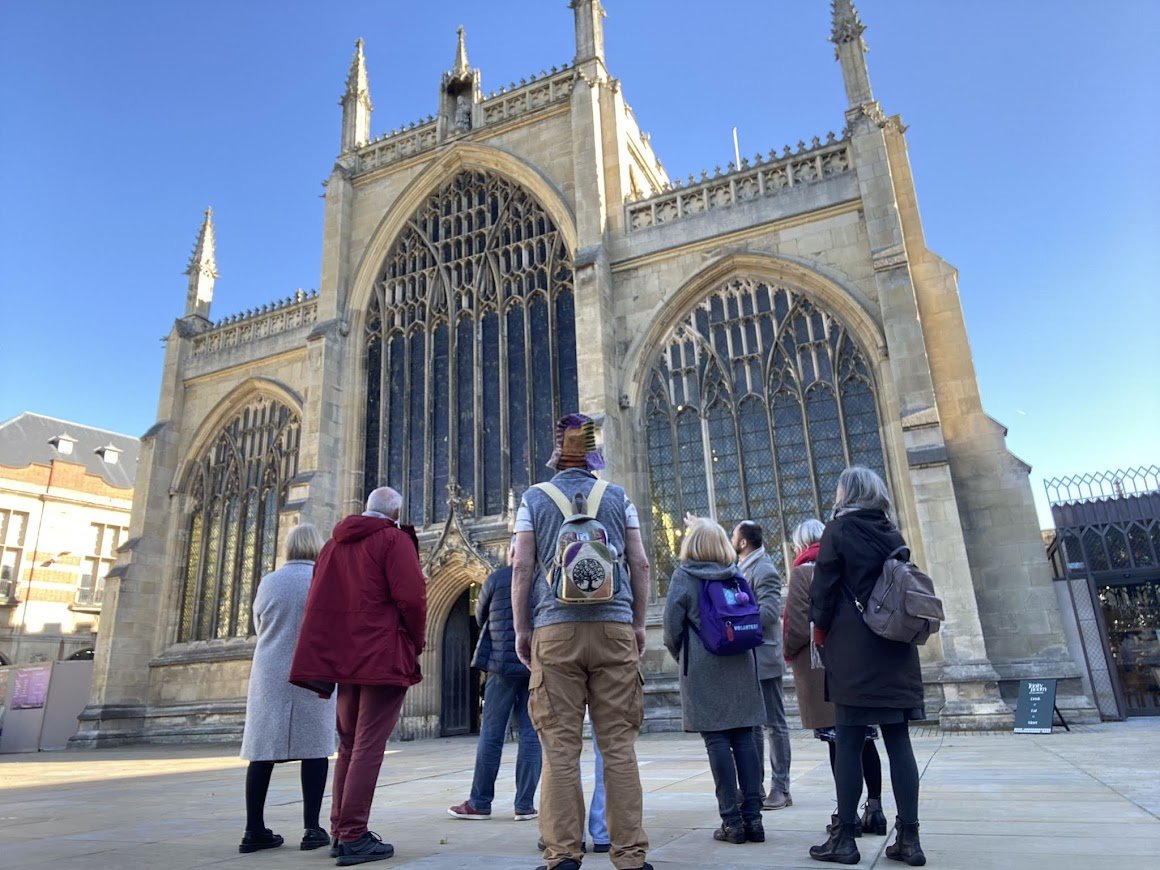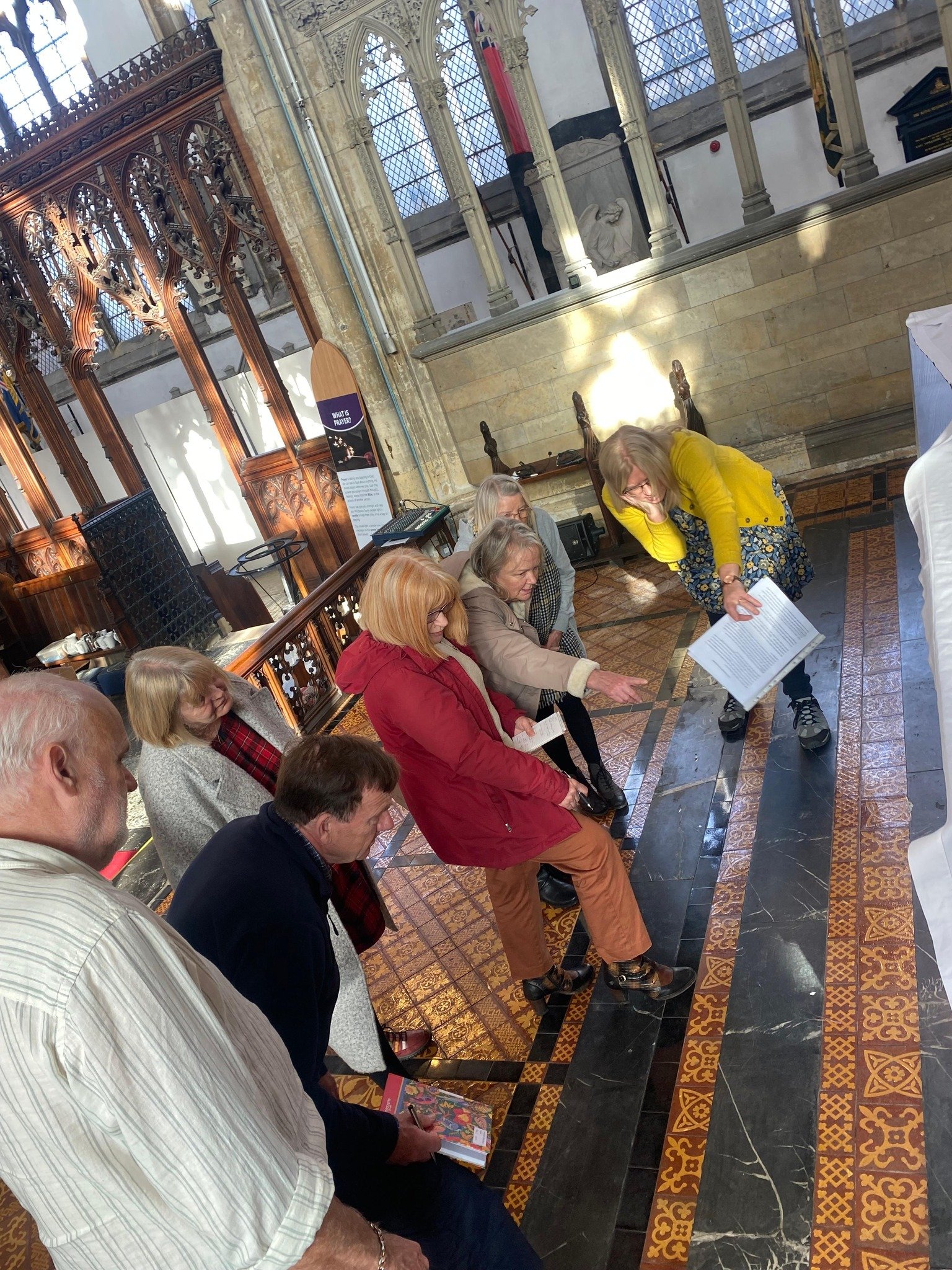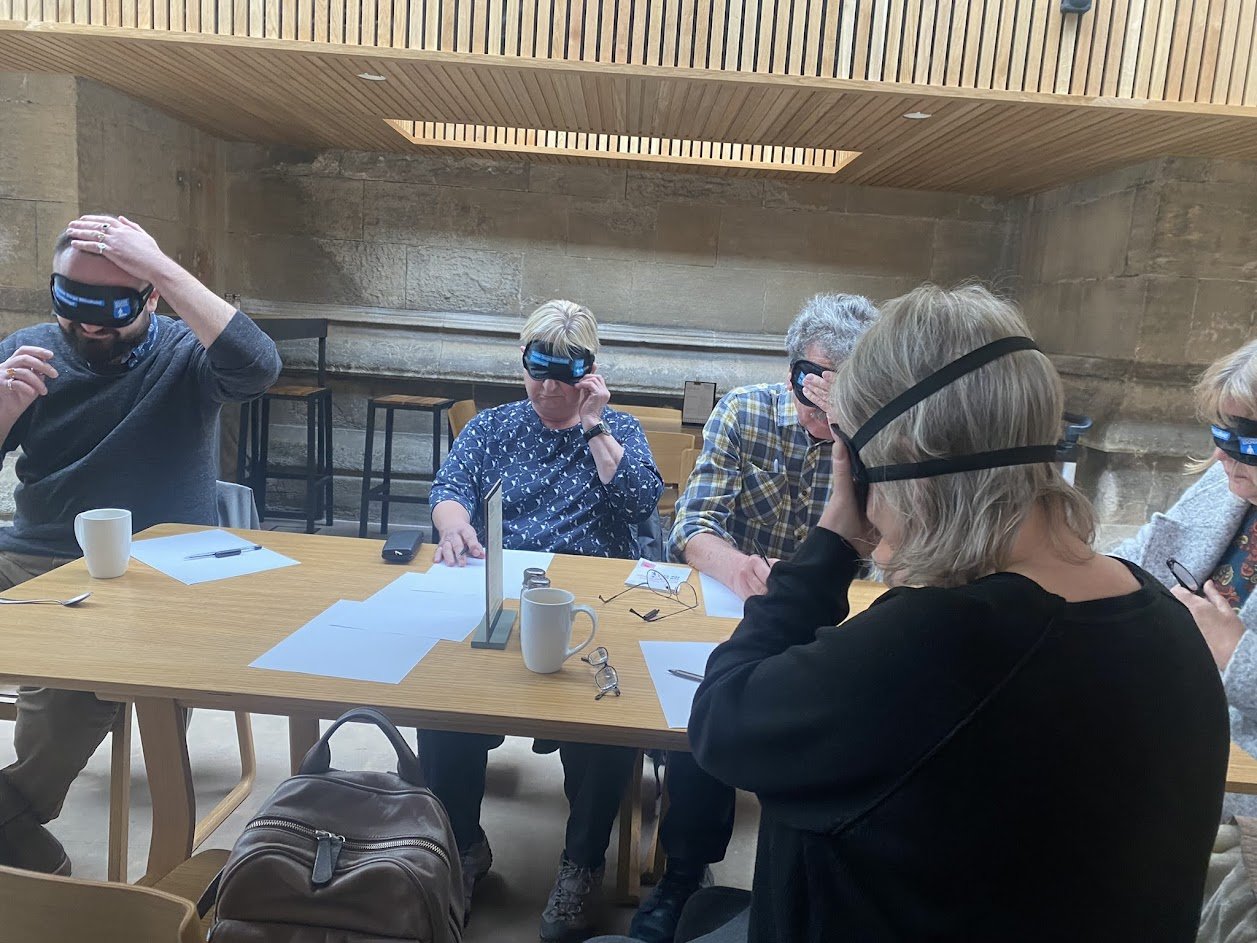A focus on volunteer training
Winter is coming, and with it the busyness of Christmas and New Year, but before that is the calm of autumn. And so far, a lovely and peaceful autumn for the Minster it has been. September and October has been a time of preparation and training for our volunteers, a chance for them to deepen their knowledge of our church and supplement their skills with new ones, oriented towards public engagement.
Our Volunteering Manager, Shirley, has been busy recruiting volunteers to work in all areas of the church. She has also had success bringing volunteers back to volunteering following periods of absence due to COVID. Volunteers have been trained by Zoe, the cafe manager, to help in the cafe, while others contribute to welcoming, maintainance, and heritage research and engagement.
Heritage Guide Training
Jane and Stephen organised a series of workshops for our volunteers focussed on tour guiding and communication skills. One of our volunteers, Michael, has kindly given us his thoughts on the training activities:
‘Our first session, which was led Hull Maritime Guides group, was about taking visitors round and how to keep them interested in what there is to see; an important factor being to make sure you are always looking at the people you are speaking to. Next we had a session trying to identify the most interesting aspects of the church. As a group our list came to 22 items including the nave and chancel ceilings, the Font, J H Bromby, the ledger stones, the Mariners’ Chapel, Parmentier’s painting of the Last Supper, the pews, the pulpit, the Sanctuary, the de Selby effigy and Crane’s stained glass windows as our top choices, though everyone had their own favourites. For the next session members picked out a favourite item and researched it then delivered a short talk to the group. Everyone did a super job on their topic and delivered highly interesting talks about the Gelder window, the Milner memorial and other items.
Heritage Intern Stephen gives our volunteers tour and guide to Hull Minster’s Medieval architecture
Stephen led us an interesting and informative walk around the outside of the chancel to view some of the oldest stone and brickwork in the building. We learned a whole new vocabulary of canopied niches and embattled parapets along with quatrefoils, ogee arches, pierced tracery and cusped trefoils!
The following session we looked at some of the archaeological finds from the church graveyard and the Castle Steet burial ground, including several coffin plates, a small figure of a lamb, decorated clay floor tiles, dozens of clay pipes, a golden 1/3rd of a Guinea coin (of George III) in perfect condition, and a range of pottery items including the Whaler’s Tankard which was found in pieces and has been reconstructed.
Rev Louise explains the symbolism of the altar and surroundings during her tour of the religious symbolism and meaning of the Choir
In our final group session the Rev Louise talked to us about the altar table and its various aspects and the symbols portrayed round about. We learned about the Eucharist and the related symbolism, and about the many different forms of crosses in use and several around the chancel. We also learned about symbols of the apostles and the five wounds of Christ.
Altogether it was a very interesting and informative series of meetings which would be of use to all volunteers.’
As Michael demonstrates, these events proved very popular and enjoyable for volunteers, and the Minster will hope to run similar events in future, potentially in January- keep your eyes peeled!
Sighted Guide Training
Shirley introduces the team from Guide Dogs for our workshop on community sighted guide training
This October, volunteers also got the chance to train as guides for the partially sighted, thanks to Guide Dogs North East. They learned the proper ways to guide a person through the Minster, and were given a chance to practice by leading a blindfolded volunteer through the church. Volunteers were also told the facts and figures related to the partially sighted in the UK, and were even given glasses which simulated various eye conditions to gain a deeper understanding of blindness.
Shirley, our volunteer manager, said that ‘it was a very enjoyable, informative day and well received by all who attended. The sighted guiding training taught volunteers how to guide a person with sight loss, with confidence, skill, and empathy. Much like learning how to perform basic first aid, sighted guiding is a useful life skill’. The sighted guiding training isn’t the only training Shirley has organized; on the 14th November the Minster will be welcoming our volunteers to the Welcome our Way event to help introduce and integrate volunteers into the team.
Our volunteers and our Heritatge Intern Stephen get to grips with their blindfolds during sighted guide training
If you would like to become a volunteer or would like to suggest some training that you think would be useful please get in touch with Shirley Kay or Jane Owen, the Project Manager, at the following email addresses
shirley@hullminster.org
jane@hullminster.org




